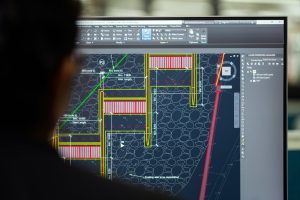Digital Portfolios Showcasing Student Growth
As the use of technology becomes increasingly prevalent in the education system, digital portfolios have emerged as a valuable tool for showcasing student growth and progress. These online collections of a student’s work provide a more comprehensive and dynamic representation of their learning journey, compared to traditional paper portfolios. Not only are digital portfolios more visually appealing, but they also allow for interactive and multimedia elements that can better capture a student’s achievements. In this article, we will explore the benefits of using digital portfolios to showcase student growth, and how they can be utilized effectively in the classroom.
The Advantages of Digital Portfolios
Digital portfolios offer several advantages over traditional paper portfolios. One of the most significant benefits is the ability to include a variety of media, such as images, videos, and audio recordings, making the portfolio more engaging and interactive. This multimedia approach not only allows students to demonstrate their skills and knowledge in different ways but also caters to different learning styles. Additionally, digital portfolios offer a more comprehensive and holistic view of a student’s progress, as they can include work from multiple subject areas and over a more extended period of time.
Tracking Progress and Setting Goals
One of the primary purposes of using digital portfolios is to track a student’s progress over time. By regularly adding new work to their portfolio, students can see how their skills and knowledge have developed and improved. This tracking of progress can also help students set goals and reflect on their learning. For example, a student may revisit work they did at the beginning of the school year and compare it to their current work, identifying areas where they have shown growth and areas where they can continue to improve.
Increased Student Engagement
Digital portfolios can also increase students’ engagement with their learning. By having a platform to showcase their work and receive feedback from peers and teachers, students are more likely to take pride in their work and put in extra effort. Digital portfolios also offer a sense of ownership and control over their learning, as students can choose what work to include and how to present it. This autonomy can lead to increased motivation and a sense of responsibility for their learning.
Integrating Digital Portfolios in the Classroom
The implementation of digital portfolios in the classroom requires careful planning and consideration to ensure their effectiveness. Here are some tips for incorporating digital portfolios into your teaching:
Set Clear Expectations
Before introducing digital portfolios, it’s essential to set clear expectations with students regarding how they should use them. This could include guidelines for the types of work to include, how often to update their portfolio, and how to reflect on their progress. These expectations should be communicated clearly and consistently to ensure that all students understand and follow them.
Encourage Reflection
Reflection is a crucial aspect of learning and should be encouraged when using digital portfolios. Students should be given opportunities to reflect on their work and their progress, helping them to identify strengths and areas for improvement. Reflection can also help students to set goals and take ownership of their learning.
Provide Feedback and Peer Review
Feedback is an essential part of the learning process, and digital portfolios provide an avenue for both teachers and peers to provide feedback on students’ work. This feedback should be constructive and focused on areas for improvement, rather than just praise. Peer review can also be beneficial, as it allows students to receive feedback from their peers and learn from each other.
In conclusion, digital portfolios offer a more comprehensive and engaging way to showcase student growth and progress. By incorporating clear expectations, encouraging reflection and providing feedback, digital portfolios can be an effective tool for promoting student learning and development. As technology continues to advance, digital portfolios are likely to become an even more integral part of the education system, providing a more accurate and detailed representation of student achievements and abilities.











